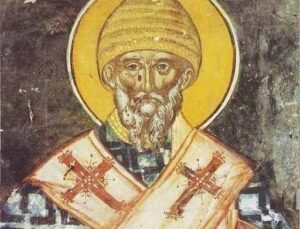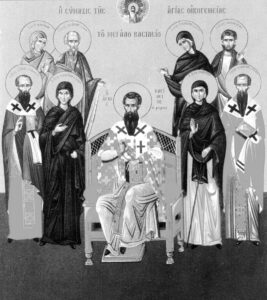
4th century, Cappadocia. The family, which gave birth to 10 children, was led by Barsegh, a famous orator in those times and regions, and by Aemelia, who later became Saint Aemelia of Caesarea. This family was a noble and wealthy family. The children of this couple are glorified as saints.
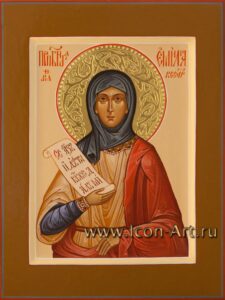
The eldest son was the great universal priest Saint Barsegh the Great. He was familiar with the Bible from childhood.
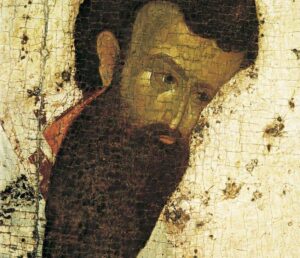
Saint Barsegh the Great is one of the outstanding Fathers and theologians of the Church. As the Patriarch of Caesarea, he left behind a legacy that, going beyond the time and place in which he lived, has spread throughout the Christian world. A significant part of the prayers of the Liturgy, commentaries, theological works and canons belong to his pen, without which it is difficult to imagine our Christian reality. Saint Barsegh amazed his contemporaries with the wealth of his knowledge. He was skilled in theology, philosophy, rhetoric, astronomy and medicine.
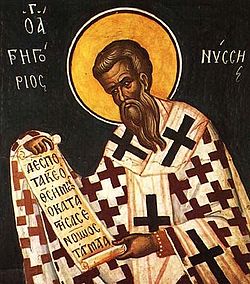
An eyewitness to his life, Amphilochus of Iconium (2nd half of the 4th century), a relative of Saint Gregory the Theologian, says: “He was a ship loaded with as much knowledge as human nature can bear.” The youngest son of the family was Saint Gregory of Nyssa. The two brothers, along with Gregory of Nazianzus, are among the "three great Cappadocians". At a young age, he was ordained a scribe, but temporarily left the spiritual sphere and became a teacher of rhetoric, studied pagan literature, married, and became the father of two children. In 365, after the death of his wife, he returned to the spiritual sphere, retired to the desert, and engaged in the study of the Holy Scriptures. In 372, Barsegh of Caesarea, having been ordained archbishop of the Cappadocian city of Caesarea, ordained his brother bishop of the Armenian-populated village of Nyssa and the city of Sebastia. In that position, Gregory of Nyssa supported his brother in the fight against sects (Apollinarianism and Arianism), for which he was deposed and exiled by the Byzantine emperor Vaghis, returning to Nyssa only after his death. In 378, after the death of Barsegh of Caesarea, he completed and published his elder brother's unfinished work, "The Six Days".
The elder of the family was Saint Macrina, the founder of female monasticism.
When Macrina was 12 years old, her beauty was striking, and her father betrothed her to a worthy young man, who had a good reputation and was educated. The groom promised to wait until Macrina reached the proper age and married. But God took the young man to himself earlier. This allowed the saint to fulfill her secret desire to remain a virgin for God. Many young men wanted to marry Macrina, but the girl preferred to consider herself a widow, not having tasted the joys and pleasures of married life. Macrina renounced the world and remained with her mother, helping her with all the household chores, even those usually performed by slaves, and also helping to raise her brothers and sisters.
After her father’s death (341), Macrina took over the administration of all the family estates in Pontus, Cappadocia, and Armenia. Mother and daughter spent their ascetic lives together, and Macrina became a mentor and example of virtue for the entire family. When the children grew up, Emilia divided all her property among them and turned the family estate in Anis into a monastery, the first nuns of which became her slaves and daughter along with her. A men's monastery was founded near the women's monastery, headed by the youngest son of the family, Peter, who later became the bishop of Sebastia. Another of the brothers, Saint Naucratius, withdrew to the desert, on the other side of the Iris River, where later Saint Basil the Great also took refuge.
Macrina was struck by a serious illness: she had a tumor. Despite her mother's persuasions, she refused medical help, believing that exposing her breasts to a stranger was more harmful than her illness. Macrina spent the night in the church, praying prostrate. She wet the floor with her tears, and then rubbed the sore spot with earth mixed with tears.
In the morning, he asked his mother to draw a cross on his chest, and the tumor disappeared, leaving only a small scar. Some of the children of this family chose virginity for themselves, some married.
All ten children of the family (one died in infancy), according to the testimony of St. Gregory the Theologian, demonstrated “excellence”, “succeeded in virtue”, and this success was the result of parental work.
Of course, history knows many pious families. But in the case of this family, what is remarkable is that we receive information firsthand.
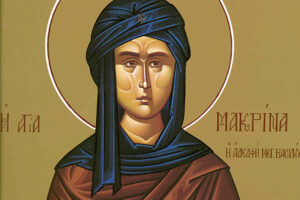
St. Gregory of Nyssa, in his “Book of Stories about the Life of St. Macrina”, described the life of his elder sister. Saint Barsegh the Great also made several observations about the upbringing he received.
Also, a friend of Barsegh the Great, a great friend of the family, the universal archpriest St. Gregory the Theologian left admiring words about this wonderful family.
